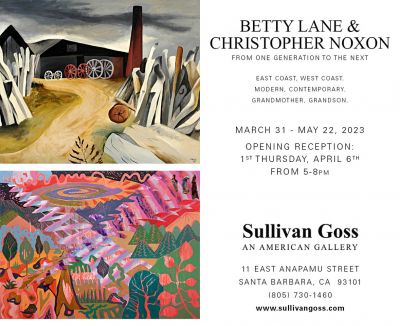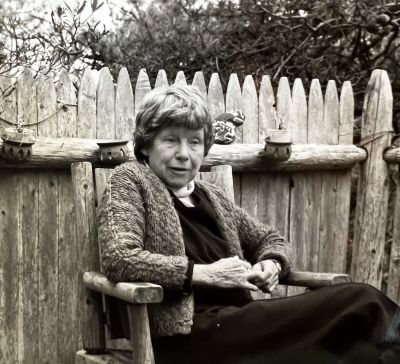Maximalism and psychedelics
The Ojai Studio Artists studio tour is this weekend (I’ll be open Oct 12 & 13 - closed Saturday). Please come! It’s a super fun weekend and a great opportunity to see art in the places its made - 60+ artists are participating this year, painters and sculptors and printmakers and ceramicists and all manner of visionary and lovely-human artmakers.
I’m hustling to finish up a 16 foot-long landscape that will go off to a private collection in Ventura in a week or two - it’s the biggest picture I’ve ever made, close to a mural in size but filled with tiny details and patterns. Excited to show it off semi-publicly before it goes off to its new happy home.
I can’t help it - I’m a maximalist. As you’ll see this weekend, my studio is crammed to the ceiling with pictures and journals and art books and a collection of stuffed chickens. My pictures are packed with brushmarks and scratches and drips and starburst orchards and big bulbous clouds and curvy roads and boxy little houses. And of course, lots and lots of color.
A few times I’ve tried to get serious and limit my palette to tasteful creams and beiges and big empty fields of nice muted tones but it’s no use - once I get going, the colors take over and all the spaces scream out to be filled up.
When people walk in, nine times out of ten they stop, take it in and say some variation of: “Wow: so much.”
At this point they either scrunch up their face and make a quick exit (their expression reading oh-so-clearly: NOT FOR ME), or start wandering around letting all this stuff do what it does to me. I love the feeling of super-saturation and world-building, the dreamy calm I felt as a kid drawing imaginary maps or the engrossed concentration I felt clicking together whole cities with multicolored Legos with my kids when they were little.
Every once in a while, someone comes in and looks around and says with a conspiratorial wink, “Hey man - mushrooms? Or ayahuasca?”
I get it - there’s definitely a psychedelic, head-shop energy in my work. I’m not all that interested in physical reality. I play with perspective and point of view, filling a single image with multiple vantage points and sources of light. There’s a reason a series of mine is called the Big Weirdies.
The truth is I’m not into psychedelics. No shade to those who are. I’ve read the Michael Pollan books and have nothing but respect for those exploring deep reaches of consciousness with whatever tools make that possible.
But the truth is none of my pictures were created with chemical assistance. Anything more than a few milligrams of cannabis makes me anxious - every sentence ends with some variation of: “Do you like me?”
After looking over the Big Weirdies at a recent show, a friend said with a wink-wink laugh, “I’ll have what he’s having.”
He’s welcome to it! What I’m having is fun.
Art and ancestors and that feeling of “this is IT”

Written for a monograph to accompany exhibit showing at Sullivan Goss Gallery in Santa Barbara, through May 22: “Betty Lane and Christopher Noxon: From One Generation to the Next”:
—-
Betty Lane is my favorite artist. Of course she is - my whole idea of what an artist is and does was formed growing up looking at her pictures and visiting her little A-frame house in the woods of Cape Cod. She was witchy, stylish, a near-mythic figure representative of worlds far removed from where I grew up in sunny, showbiz-adjacent LA. She played viola in a classical quartet, wore necklaces fashioned from eucalyptus pods and sent my sister Marti and me rambling, weirdly adult letters in a scrawl that only my dad could decipher.
And she’s the main reason I make art today.
How that happened is complicated - I came to painting in midlife, twenty-odd years after she died, and when I think back over our times together I can only remember once when she directly encouraged me. When I was seven or eight I made what I called a “busy picture,” with jagged orange mountains and a spotted green sky and the remainder of the page jigsawed with trees and bushes and roads and horses and, curiously, an entire city with skyscrapers the same scale as the bushes.
I remember her seeing it and grinning, clasping her hands in front of her face, heavy rings clanking together. Then she put my busy picture in a frame and hung it up in her house, right alongside the “real art.” (It’s not lost on me that the work I’m doing today looks an awful like that busy picture - so much for growing up!)

My memories of her will always be tied up in that house. You entered from the basement, where she did most of her work. Bits of colored glass hung in the window. A stuffed dinosaur sat on the chair for models. Everywhere there were paintings, stack upon stack, many on both sides of a single sheet of particle board.
Upstairs, the wooden skeleton of a pterodactyl spun slowly over a rollout desk stuffed with letters and postcards. Shelf tops were crammed with a crazy assortment of stuff—a chunk of mosaic, a swath of fishing net, a patchwork pillow, a model of a double decker bus, the inner workings of a music box. She didn’t keep these things as ornaments—she seemed to carry on a relationship with even the littlest of objects, and most gave her real pleasure. A few did not—I remember a compact disc by Bobby McFerrin had been marked with a piece of masking tape, printed with the words, “No! No!” (“Don’t Worry Be Happy” was not Grandbetty’s jam).
By the time I moved to the Cape in 1992, Betty had stopped making art. Her hands jittered, she said. She was past 80, rail thin and fiercely independent. She still tore around in her little Accord, a string of fading yarn tied to the antenna, a sticker for Michael Dukakis’ failed presidential bid on the bumper. She walked with a stoop and had a hard time getting up from a chair, but her eyesight was perfect—she took great pleasure playing a video of her cataract operation. “My eye!” she giggled, pointing at the television picture of a quivering pink glob.
I visited her on my days off work. She always made a fuss at first, shuffling around the house fetching things. A peanut butter jar filled with old raisins. A ceramic dish filled with unsalted peanuts. Cold white wine in a shrimp cocktail glass. We would talk local politics, the new New Yorker, the threat of snow.
She died a few years after I’d moved away. My father Nick and his wife Nicky helped organize an exhibit at the Cape Cod Museum of Fine Arts; family flew in for the show. In the following years Nick took on the job of sorting through her art, diaries and ephemera, assembling a biography made up mostly of her extraordinary diary entries and promoting her work in ways she was either too proud or shy to do herself.
It’s moving to think of my dad poring over all this material, filling stacks of legal pads with notes on her paintings and chapters of her life, including a frank, brutal account of her pregnancy, the chilly and mostly distant relationship with Nick’s father and various tortured, passionate love affairs (with a Jewish divorcé named Harry, a family friend and a man only identified as “Mr X.”)
I began looking after Betty’s paintings and papers a few years ago shortly after a big shift in my own life. I had recently moved out of LA to the small mountain town of Ojai and was dealing with the aftermath of a divorce and the sudden death of my eldest son.
Grieving is exhausting and infuriating - the feelings rage, the voices in your head run on repeat and everything seems to hit a dead end (he’s gone, she’s gone, they’re gone, you’ll be dead soon too…). While I had no formal training, I took up painting, holing up in a studio tucked in a grove of olive trees. Art offered an escape from the doom loop, a place where I didn’t really know who was doing the work, where the best I could do was get out of the way and let whatever needed to come arrive. I painted to get lost, to lose myself, to connect with something bigger and beyond me.
And Betty was my teacher. Early on I did a series of pictures modeled on hers, pairing portraits she’d done of subjects from the 60s and 70s beside pictures of my Ojai friends and neighbors and looking at Betty’s landscapes of Canada and Cape Cod while working on my own pictures of the landforms and skies I saw on walks near my new home.
As inspiring as her work was, Betty’s a tough teacher. She went through so many stages, so many modes, from gloomy surrealism to moddish satire. She was obviously a modern artist, but she wasn’t interested in categories like surreal, expressionist, primitive, writing at one point that “the more I work the less important style seems, the less essential. One is either good, and has it, or one hasn’t. Style is only the means.”
That’s a tough lesson for someone starting out - either you’re good or you’re not. But elsewhere in the diaries I found more encouraging ideas. In 1942 Betty was living in rural Canada, raising my dad and occasionally venturing out into the countryside to paint. She described a trip into the sand dunes of southeast Ontario:
There is a beautiful Petrified Forest of dead and somewhat submerged cedar trees. I walked towards this in pure delight feeling that indefinable, this-is-it feeling….I have been here before. There it is, clean and dead and still there, and one cannot not paint it.
That’s how it is - you see something, some particular combination of things, some brilliant scene of light or color or form and you feel deep down in your bones: one cannot not paint it. What Betty is describing - the this is it feeling - is the mysterious act of art, the verb not the noun, the aligning of an interior unknowingness and an external sensory reality, the transcendent sense of YESness, or order and harmony and congruence: THIS IS IT.
I struggle with the words to describe how good it feels to have my first real show alongside Betty, how it connects me to her and my dad and also Charlie, whose presence and absence was such a powerful force in the creation of these pictures. I don’t understand how these static, two-dimensional rectangular depictions have this power, a kind of mysterious charge that electrifies the connective threads between the here and there, the living and the dead, the seen and unseen, the known and not.
Back in 1936, Betty wrote the following in her diary:
“I am no intellectual and no genius, but I am capable of experience, and I am still discovering things which make me feel alive, so that you others may shout your heads off about this theory and that. With me, life is going on, and nothing else matters.”
That’s why Betty painted, and I why I do too.
 on Facebook
on Facebook
